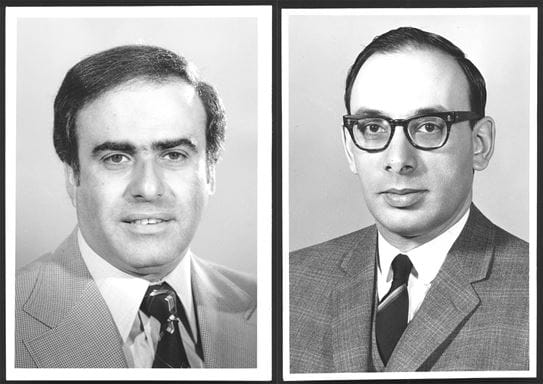In 1965, Dr Phil Gold and Dr Samuel Freedman of McGill University made an astounding discovery.
They found what others had failed to: a tumour marker in human blood.
The discovery of carcinoembryonic antigen (CEA) was a medical first that revolutionized the management of cancer treatment. Present in many human cancers, especially at advanced stages, it meant that the spread of the disease could be tracked with a simple blood test.
Now, on the 60th anniversary of its discovery, the CEA blood test continues to be one of the most frequently used in the world, especially for the management of colorectal and other gastrointestinal cancers. High levels of CEA can be a sign that a treatment isn’t working and cancer is spreading.

“For 60 years, the CEA test has helped us diagnose and monitor cancer,” says Dr Stuart Edmonds, Executive Vice President, Mission, Research and Advocacy at the Canadian Cancer Society (CCS). “It also opened the door to discovering a wealth of other tests that allow us to better understand, detect and treat cancer.”
Montreal oncologist Dr Jamil Asselah uses the CEA test routinely in his practice. “It’s a daily test for many patients undergoing chemotherapy treatment and for many patients on follow-up who are at high risk of recurrence,” Dr Asselah says. “You have one blood test and, a few minutes after, you have the results. And you know that, okay, the patient is doing very well – see you in 6 months – or, oh, there’s something wrong.”
Dr Gold also determined that CEA was one of a class of proteins known as “oncofetal antigens.” These proteins are usually present during fetal development but also occur in adults with certain kinds of cancer. This led to a whole new field of research and, over the years, other such tumour markers have been found.
But the CEA tumour marker is the standard against which others can be evaluated. Although not accurate enough to diagnose cancer definitively, elevated CEA is an important signal of treatment success or failure.
“When a patient has stage 4 disease and the CEA goes down, you know that the treatment is working. As soon as the results come in, the patient has a beep on the phone and the patient knows they’re doing well,” says Dr Asselah.
Dr Gold credits the Canadian Cancer Society, which funded the National Cancer Institute of Canada (NCIC) from 1945 to 2009, for making his important discovery possible. “The NCIC was a lifesaver. Without the NCIC, I would have gone nowhere.”
In 2010, Dr Gold was inducted into the Canadian Medical Hall of Fame for the discovery of CEA. Today, he continues to educate and inspire new generations of doctors and scientists to make a difference in the lives of people with cancer.
Help fund world-leading cancer research
With almost half of all Canadians expected to face a cancer diagnosis in their lifetime, the urgency for funding is at an all-time high. Research holds the key to transforming the future of cancer.
If everyone reading this joins our monthly donor community today, we can keep up the momentum for life-changing discoveries to better detect, diagnose and treat all types of cancer.
Please donate today because every contribution counts.
